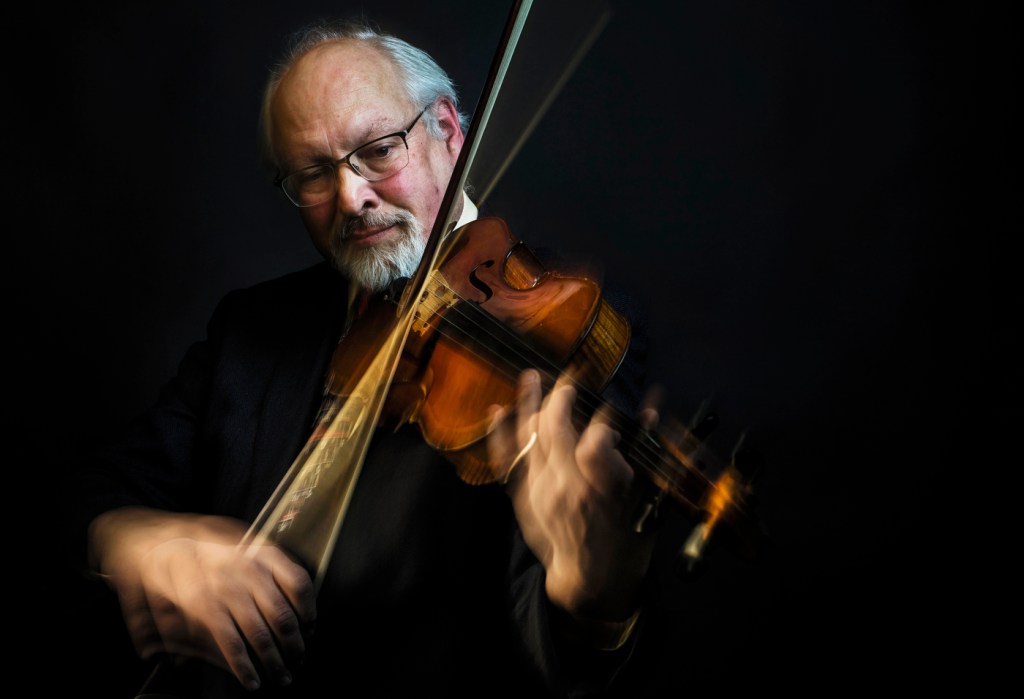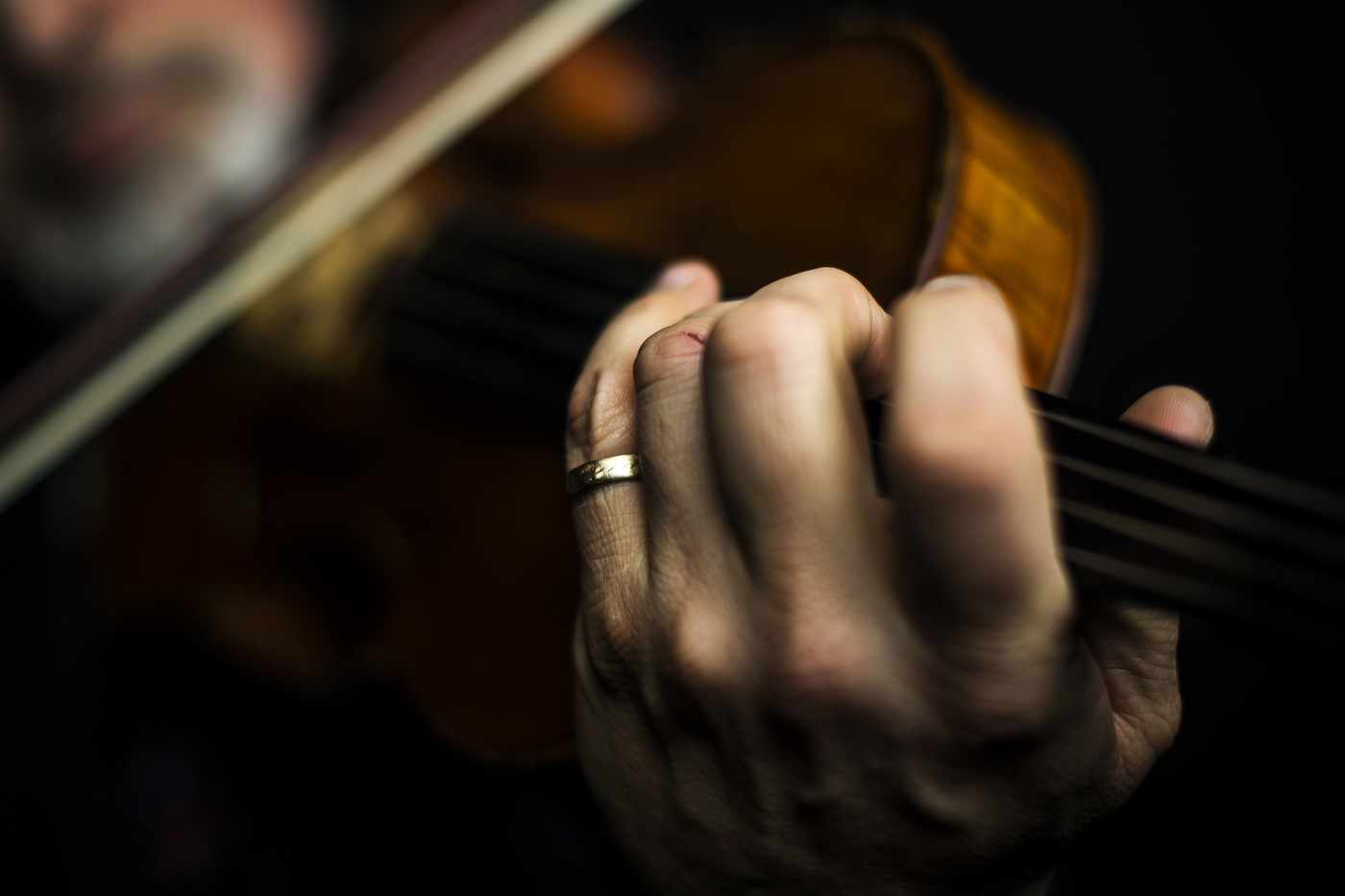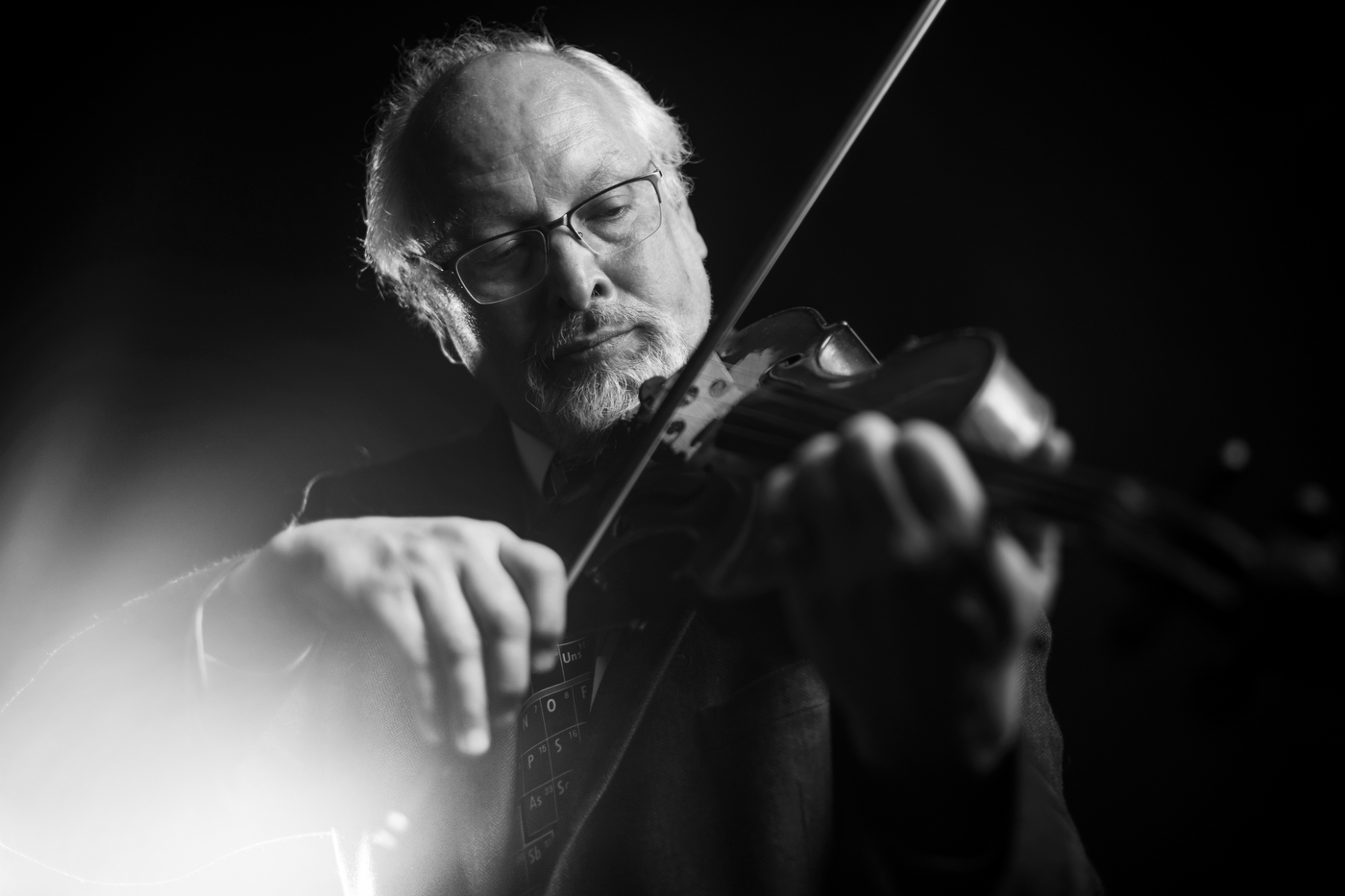Molecules or music? Northeastern chemistry professor chooses both

The chemicals dopamine, oxytocin, serotonin, and endorphins are like a string quartet, working together to influence happiness in the brain. This is just a figure of speech, of course. But for David Budil, chemistry and music are, in fact, both sources of happiness.
Budil is an associate professor and associate dean of chemistry and chemical biology at Northeastern. His lab uses a method called electron spin resonance spectroscopy to study the physical behavior of macromolecules. He is also a musician, having played the viola nearly all of his life.

Photo by Adam Glanzman/Northeastern University
Budil is currently a member of the New Philharmonia Orchestra, and on March 18, the orchestra will play a sold-out show at Boston’s Symphony Hall alongside Grammy Award-winning artists Amy Ray and Emily Saliers—better known as the Indigo Girls.
“My wife is particularly into folk music and has all of their albums, so I’m familiar with them and like them very much,” Budil said.
Budil grew up in a musical family. His mother was a singer, and in high school he played the viola in an orchestra that accompanied her on stage. The viola is similar to a violin, but larger, and with its own specific clef. On learning the instrument, Budil said, “It kind of was an accident. It’s what happened to be available.” But the accident stuck. Budil said he likes being in the middle of the harmony and playing a support role in an orchestra.
Science and music may seem like an unlikely combination of interests. But in fact, Budil said there are other musicians hidden in the labs of Northeastern—an organist, a bassoon player, and a cellist, to name a few.

Photo by Adam Glanzman/Northeastern University
“Most of the string quartets that I’ve played in have had scientists in them,” he said. “The one that I play in right now has two doctors, a bioinformatician, and me.”
Budil said that music and science share a certain symmetry and logic that makes them similar to master.
“There’s a certain parallel in terms of the discipline you have to apply to perfect something, just like a chemical synthesis or a laboratory procedure or an experiment,” Budil explained. “There’s a certain way to organize your thinking when you’re approaching a piece of music that applies to any type of learning, not just chemistry.”





